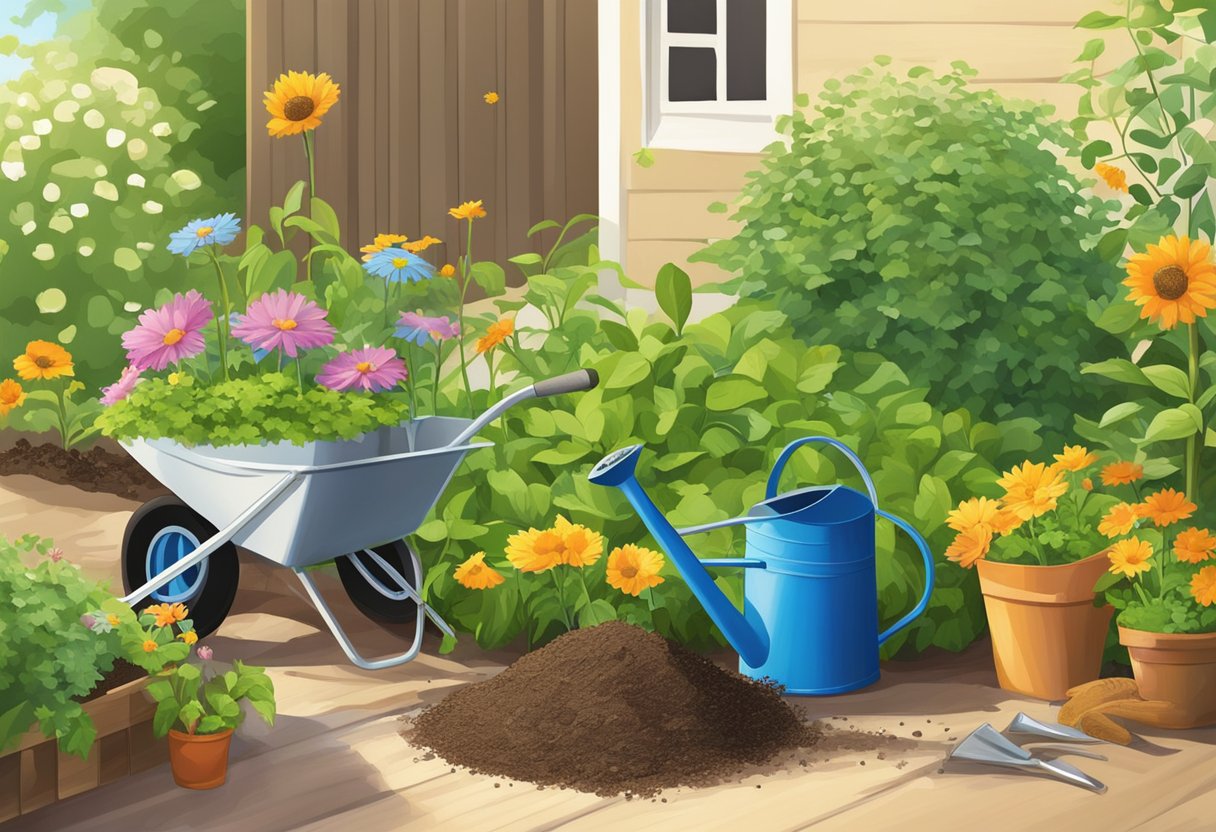Gardening is more than just a hobby; it’s an engaging form of physical activity that connects us with nature and can contribute to community beautification. As enjoyable as it is to plant and nurture flowers, fruits, and vegetables, it’s not unusual to feel muscle aches after a day spent in the garden. These aches are a sign that our bodies have been exercised, similar to the feeling after a good workout. But why does this happen, even when we’ve simply been tending to our plants?

Our bodies are subjected to repetitive motions, bending, and stretching that we may not be accustomed to during our daily routines. Tasks like digging, planting, weeding, and pruning require the use of various muscle groups. When muscles are used in unfamiliar ways, or for prolonged periods, they can become sore. This is our body’s way of telling us that it has been stressed and needs to recover. Despite the discomfort, this reaction is a natural response to physical exertion and a sign that our gardening activities are indeed a form of exercise.
JUMP TO TOPIC
Optimizing Garden Ergonomics
Body aches after gardening often stem from strain and overuse. By fine-tuning our approach to garden ergonomics, we can reduce discomfort and enhance our gardening enjoyment.
Choosing the Right Tools
💥 Essential for Comfort
I make it a point to select tools that feel natural in my hands and reduce the strain on my wrists and back. The key is to look for ergonomic gardening tools that are specifically designed with comfort in mind. For example, ergonomically designed trowels with curved handles can make a significant difference.
Effective Techniques for Planting and Digging
Long-handled tools are a staple in my routine. They allow me to work the soil without bending over excessively, preventing lower back pain:
- Keep the back straight and use the legs when digging to avoid strain.
- Rotate tasks every 15 minutes to prevent repetitive motion injuries.
Leveraging Raised Beds and Vertical Gardening
Raised beds have been a game changer for me. They facilitate gardening at a comfortable height, minimizing the need to stoop or kneel. Furthermore, vertical gardening techniques alleviate stress on the body by bringing plants up to my level.
| Benefits | Raised Beds | Vertical Gardening |
|---|---|---|
| Accessibility | Easier on the back and knees | Plants at arm’s reach |
| Productivity | Can lead to higher yields | Efficient use of space |
Maintaining Body Wellness While Gardening
I find that tending to a garden is a refreshing but physically demanding task. Keeping your body well-maintained is crucial to enjoy the fruits of your labor without paying the price with aches and pains. I follow a few specific routines and practices to prevent injury and address any discomfort that may arise from repetitive movements and strain.
Warm-Up and Stretching Routines
Before I grab my gardening tools, I dedicate time to warming up, just as I would before any physical activity. This includes:
💥 Key stretches:
- Arm and shoulder stretches to prepare for pruning and planting.
- Gentle spine twists to wake up my back muscles.
- Leg stretches to ready my muscles for bending and kneeling.
I ensure that each stretch lasts for about 15 to 30 seconds to effectively prepare my muscles and joints for the workout they’re about to get from gardening.
Understanding Injury Prevention
Good posture is key.
I keep my back straight and lift with my legs, not my back, to avoid lower back pain. By using ergonomic tools, I minimize the strain on my joints and muscles. I’ve learned that prevention is better than cure, so I’m cautious not to overdo any activity that may cause muscle pain or strain.
Recognizing and Responding to Aches and Pains
Even with precautions, I sometimes experience aches after gardening. When that happens, I:
Hydrate to aid muscle recovery and reduce soreness.
If the pain is persistent, I consult a physical therapist to help me address any potential injuries. Not overlooking the discomfort is crucial as gardening should bring joy, not pain.
Practical Tips for Reducing Strain
As someone who enjoys gardening, I know firsthand how important it is to use proper techniques to avoid unnecessary strain. By incorporating strategic rest periods, managing how I lift and carry, and utilizing correct postures for squatting and kneeling, I’ve made my gardening sessions more comfortable and reduced the chances of aches and pains.
Incorporating Rest and Breaks
I make sure to take regular breaks, about every 20-30 minutes, to prevent overexertion. During these breaks, I focus on doing light stretches to alleviate muscle tension, especially in my back and shoulders. I’ve found that this strategy helps to minimize the discomfort and keeps me energized for the tasks ahead.
- Take a short break every 20-30 minutes
- Stretch key muscle groups during breaks
- Alternate between tasks to avoid repetitive strain
Proper Lifting and Load Management
I’ve learned the hard way that improper lifting can lead to back strain and even more serious injuries. When lifting heavy objects, I bend my knees and keep my back straight to engage my leg muscles instead of my spine. For particularly heavy or awkward loads, I don’t hesitate to ask for help or use a wheelbarrow to distribute the weight more evenly.
💥 Proper Lifting Techniques:
- Bend at the knees, not the waist
- Keep the back straight and use leg muscles
- Ask for help with heavy or large items
- Use a wheelbarrow or garden cart
Techniques for Squatting and Kneeling
To protect my knees and back while I work, I use a kneeling pad and try to maintain good posture. I also make sure that I’m not squatting or kneeling for too long to avoid pressure on my joints. When necessary, I’ll switch to a comfortable seated position or take a moment to stand and stretch.
- Use a kneeling pad to protect knees
- Switch positions regularly
- Stand and stretch periodically












